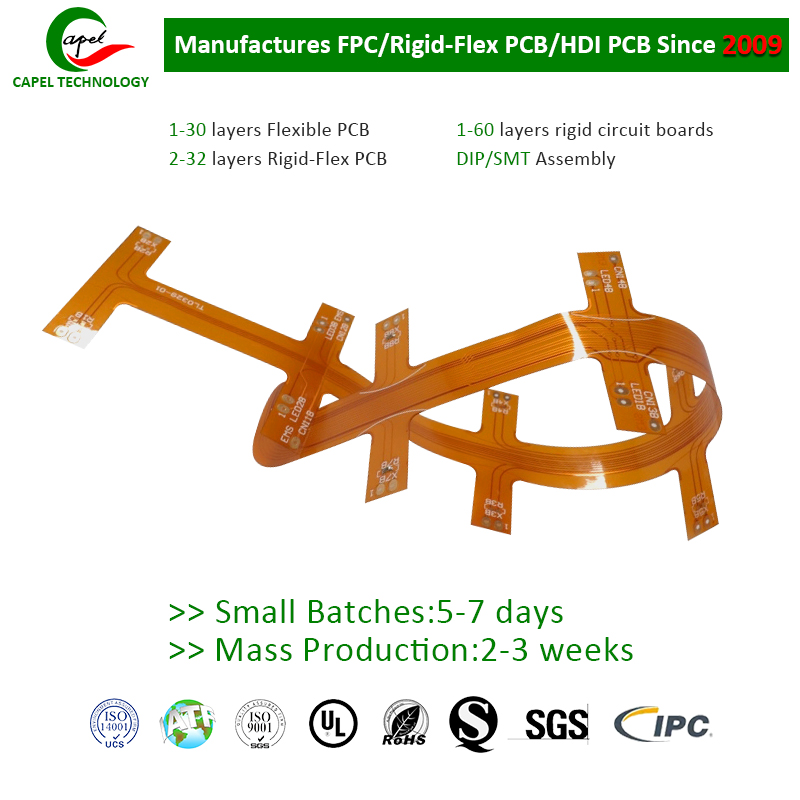Welcome to Capel’s blog, where we discuss all things PCB manufacturing-related. In this article, we will address common challenges in 2-layer PCB stackup construction and provide solutions to address flatness and size control issues. Capel has been a leading manufacturer of Rigid-Flex PCB, Flexible PCB, and HDI PCB since 2009. We have more than 100 skilled engineers with more than 15 years of experience in the PCB industry and are committed to providing customers with high-quality PCB solutions.
Flatness is an important aspect to consider when working with PCB stackups as it directly affects the overall performance and reliability of the final product. A perfectly flat PCB is critical for efficient assembly, correct component placement, and effective heat dissipation. Any deviation from flatness can lead to poor solder joint formation, component misalignment, or even stress on the circuit board that can lead to electrical shorts or opens.
Dimensional control is another critical factor in PCB design, as it ensures that the board will fit precisely within its designated enclosure. Precise dimensional control allows the PCB to seamlessly integrate into the final product, avoiding interference with other components or structural elements.
Let’s delve into some effective solutions to overcome flatness and dimensional control issues in 2-layer PCB stackups.
1. Material selection:
Choosing the right material is the foundation of a flat PCB. Choose high-quality laminates with excellent dimensional stability. Consider using low CTE (coefficient of thermal expansion) materials such as FR-4, which reduces the risk of warping due to temperature fluctuations during manufacturing or use.
2. Correct stacking order:
The arrangement of the layers in a stack can significantly affect flatness. Make sure the layers are properly aligned and that the core and prepreg materials are distributed symmetrically. Balancing the distribution of copper layers within the stack also promotes uniform thermal expansion, thereby minimizing the potential for warping.
3. Controlled impedance routing:
Implementing controlled impedance traces is not only critical for signal integrity but also helps maintain flatness. Utilize impedance-controlled routing techniques to prevent excessive variations in copper thickness across the board, which can cause bending or warping.
4. Vias and plated through holes:
The presence of vias and plated through holes (PTH) can introduce stress points and affect flatness. Avoid placing vias or PTHs in areas where they may compromise the structural integrity of the board. Instead, consider using blind or buried vias to minimize any potential warping caused by drilling or plating processes.
5. Thermal management:
Ensuring efficient heat dissipation is critical to maintaining flatness. Thermal vias are used to move heat away from hot spots on the circuit board. Additionally, consider using a copper plane or heat sink to dissipate heat more efficiently. Adequate thermal management not only prevents warping, but also enhances the overall reliability of the PCB.
6. Precise manufacturing process:
Work with a reputable manufacturer like Capel who has extensive experience in producing high quality PCBs. Advanced manufacturing techniques, including precision etching, controlled lamination and multi-layer pressing, are critical to achieving flatness and dimensional control.
7. Quality control measures:
Strict quality control measures are implemented throughout the manufacturing process. This includes regular inspections, advanced metrology techniques and compliance with industry standards. Effective quality control ensures that flatness and dimensional control requirements are always met.
In summary, flatness and dimensional control are critical to the success of a 2-layer PCB stackup. By carefully selecting materials, following the correct stacking sequence, implementing controlled impedance routing, managing heat effectively, and working with an experienced manufacturer like Capel, you can overcome these challenges and achieve superior PCB performance. Don’t compromise on PCB quality – trust Capel to meet all your PCB needs.
Post time: Sep-28-2023
Back







